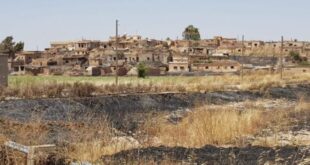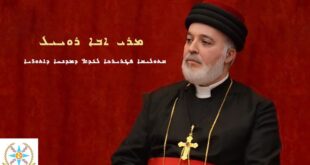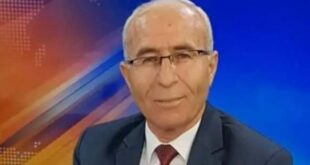Giza(Egypt)- Ahram — The sectarian violence that erupted on Friday in the village of Bimha, in the Ayat district 70 kilometres south of Giza, seemed less a spontaneous outburst fuelled by wrangling among villagers than a premeditated act. Pamphlets had been distributed throughout the village before a mob, armed with everything from machetes to containers of kerosene, ran amok through the village.
Within 40 minutes, 36 houses belonging to Christians had been burned and seven shops looted. Ten villagers were in hospital, two in a critical condition. At the time of going to press 35 alleged perpetrators were being questioned while another ten remain at large. A Christian man was subsequently detained, charged with throwing a plastic bag filled with inflammable liquids into a Muslim prayer area on Sunday.
Pamphlets distributed ahead of the violence called on Muslim villagers who wanted to “protect” their religion to gather after Friday prayers, in order to stop the construction of a church in their village. The pamphlet included the rumoured location of the church and concluded by saying that the time to act had come: “there must be no more laxity, no more laziness… it is necessary that every Muslim protects his religion otherwise all is lost.”
While there are reports that some Christians were threatened as early as Thursday, the security forces arrived three hours after the riot began. Observers have claimed that tardy responses are typical of the security forces’ strategy, which seems to involve a wait and see approach to sectarian violence, after which they move in, but only after the violence has abated. Then, they begin to attempt to clean up the mess.
Raouf Abdallah, a Coptic school teacher and part-time farmer, was working in his fields on Friday morning when he heard women screaming that their homes had been broken into and set on fire. “When I arrived at my brother’s house, I was restrained by two older men who told me that I should stay out of the house while the others finished the job inside. They said that they didn’t want any killing, and that they were just there to destroy our belongings.”
The mob, said Abdallah, comprised all age groups, from the very young, to elderly men. “The ghafar [local guards] were also among rioters, they used their rifles to whip people,” he says. After putting out the fire in his brother’s house, he went to help extinguish fires in the homes of his aunt and fiancée. “They took all the electrical appliances, the jewellery I had bought my fiancée and burned what was left,” Raouf said. He also reports that in some incidents, Muslims tried to protect the property of their Christian neighbours.
“This is not the first time that this has happened in the Ayat area. Similar incidents have occurred in the villages of Girza, Izbit Wasfi Ghali, and in the town of Ayat itself,” says 38- year-old accountant and Bimha resident, Magdy Ayaad.
Bimha’s Christian families had long gathered in the home of fellow congregation members Atif and Arian Youssef in order to worship. Following negotiations between the clergy and security forces, it was agreed that a place of worship could be built, though without any domes or crosses which might anger the local community. After the first floor of the building was completed in 2005, construction was halted by security officials after complaints raised by local residents.
Subsequently a compromise was reached, with Christians allowed to pray in their old places of worship, the home of Atif and Arian Youssef. To compensate the two congregation members, whose home would henceforth be a dedicated space for worship, Atif was to receive money and land, while Arian opted to finish the church’s partially constructed building and make it his home. “The problem is that there is a great deal of fear, anger, and ignorance regarding the presence of a church especially among young people,” said Ayaad. When the rioting started, some 2,000 people began to demolish the partially constructed building.
“I predict that this will happen again now that the rioters know they can get away with it,” Ayaad said. Ayat’s parish priest, Makary Labib, says that Christians are often forced to use roundabout ways to build places of worship. It is a result, he says, of the difficulties involved in obtaining a building permit for a church.
“No church had been built in the town of Ayat since 1962. A presidential decision was announced in 1973 allowing a permit for building, but then it was revoked. It wasn’t until 1996 that the church could open,” says Labib.
Asked about possible solutions to recurrent outbreaks of sectarian violence Mounir Fakhry Abdel-Nour, the Coptic secretary-general of the liberal Wafd Party, said the question is raised on an almost monthly basis. “We talk about it for 24 hours then forget it for 30 days, until another problem happens,” he said.
“The media on both sides of the issue seem to bolster a position of fanaticism, while the true roots of the problem are cultural and educational,” argues Nour.
Coptic intellectual Kamal Zakhir finds that the most alarming dimension of this latest incident is the involvement of “simple villagers” and not extremist groups. It shows, he said, how deep-rooted fanaticism has become in society.
 Assyrian Democratic Organization ADO
Assyrian Democratic Organization ADO






